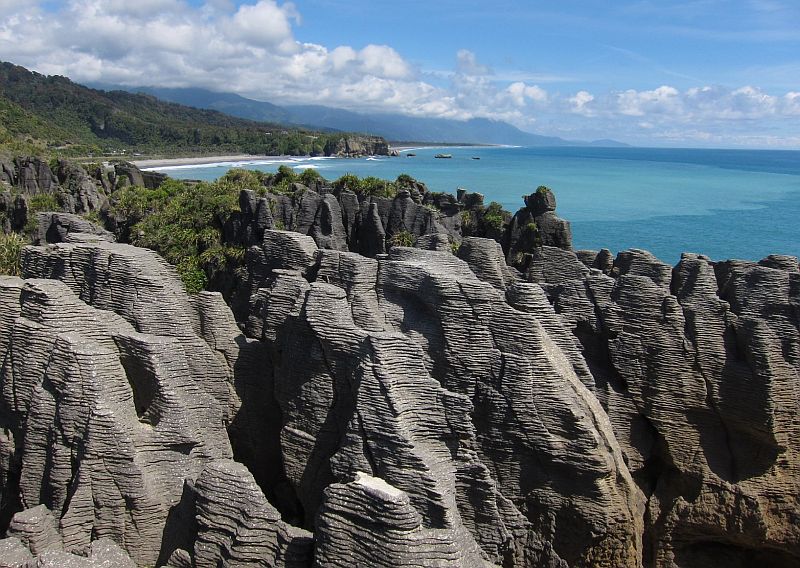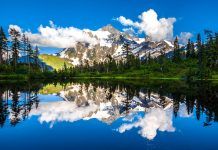Arizona’s Most Iconic Slot Canyons
In the American Southwest, Navajo Upper Antelope Canyon lies on Navajo land near Lechee, Arizona. The Navajo Reservation consists of five distinct, scenic slot canyons; Upper Antelope Canyon, Rattle Snake Canyon, Owl Canyon, Mountain Sheep Canyon, and Lower Antelope Canyon. A hiking trail to Rainbow Bridge National Monument is one of the main attractions of Lake Powell Navajo Tribal Park. Through flash flooding and other sub-aerial processes, Navajo Sandstone was eroded to form Antelope Canyon. A large basin above the slot canyon sections collects rainwater, which rushes into the narrow passageways during monsoon season. A series of deepening corridors and smoothed edges resulted from erosion, deepening the pathways over time.
There is no better way to enjoy the beauty of Arizona’s slot canyons than to experience them for yourself. In spite of their popularity among hiking enthusiasts and professional photographers, the canyons are accessible to just about anyone. Are you still in awe after looking at the pictures? Is there anyone who wouldn’t want to see this for themselves? It is imperative that you go adventuring with a Navajo guide in all four canyons below.
Upper Antelope Canyon
Usually visited during the day, Upper Antelope Canyon is known among the Navajo as Tsé bighánílíní. Slot canyons near Page, Arizona are typically the most crowded because of their location where water runs through rocks. The canyon has the largest caverns, making it suitable for even large groups of tourists. Furthermore, the canyon is all at ground level, so climbing is not necessary to access or navigate it. There are also many openings at the top of the canyon that radiate direct sunlight down. During the summer, beams are most likely to occur since the sun is high in the sky during this time of year.
A light beam appears in the canyon on March 20 and disappears by October 7. Everyone can access it this way. This canyon is well-suited for group tours but knows that you won’t be alone. There might be a crowd problem here, so if you’re impatient with crowds, you might not enjoy the experience.
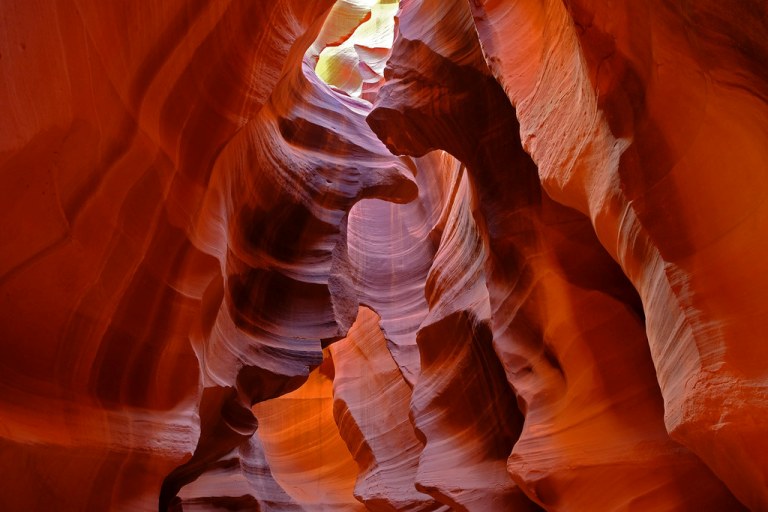
Lower Antelope Canyon
When you have only a limited amount of time to explore one of Page’s slot canyons, Lower Antelope Canyon deserves your attention. Some call it Hazdistazi (meaning “spiral rock arches”). Compared with the Upper Antelope Canyon, the lower canyon is shaped like a “V.”. Early morning and late afternoon are the best times to view the canyon.
If you have limited time, Lower Antelope Canyon is the best choice. Its landscape is amazing in spite of its small size, with some of the best lighting and colors, as well as some of the most iconic undulating formations in the rock walls. A canyon like this is a great place for amateur photographers to take amazing photographs!
A metal stairway was installed in some areas before pre-installed ladders could be used to visit the canyon. Although stairways were installed, it is still a more challenging hike than Upper Antelope. In some places, there is no even footing, and it is longer, narrower, and steeper at times. Though Lower Antelope Canyon is less popular among casual sightseers than Upper Antelope Canyon, it still attracts plenty of photographers. Midday is the best time for photography tours. It is not permitted for photographers to bring tripods.
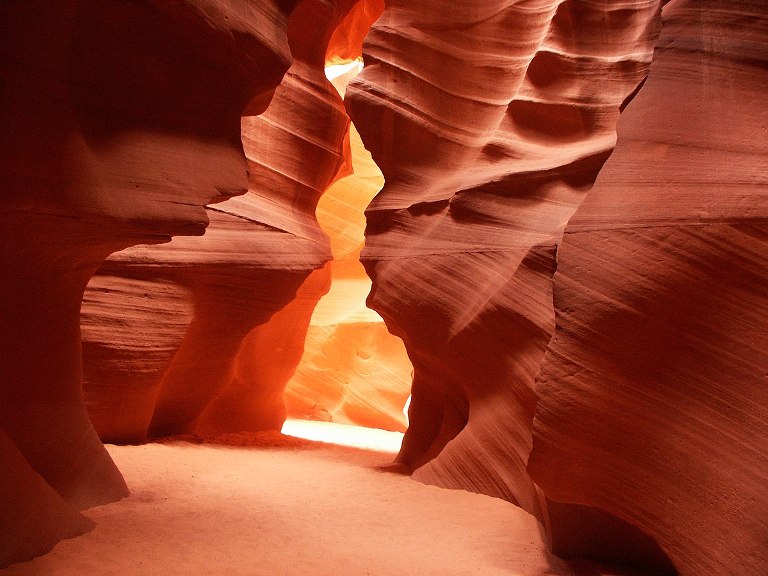
Mountain Sheep Canyon
The rugged Mountain Sheep Canyon provides a more challenging hike than the others. This canyon trek is a little longer (about three-quarters of a mile), and there are a lot of ladders to climb. Although the ladders are fixed to the rock, a few of them might make you nervous, especially if you’ve got young kids.
Be aware that Mountain Sheep Canyon isn’t directly adjacent to Antelope Wash, where the others are. You’ll have to take a bit of an adventure to get there. In comparison to Antelope Canyon and Rattlesnake Canyon, the texture here is rougher and less graceful. Instead of fine and granular grooves, the stone has bigger ones. Compared to its fellow canyons, these walls are jagged, so they look different. One reason this canyon isn’t visited as often as others are because it has a different feel.
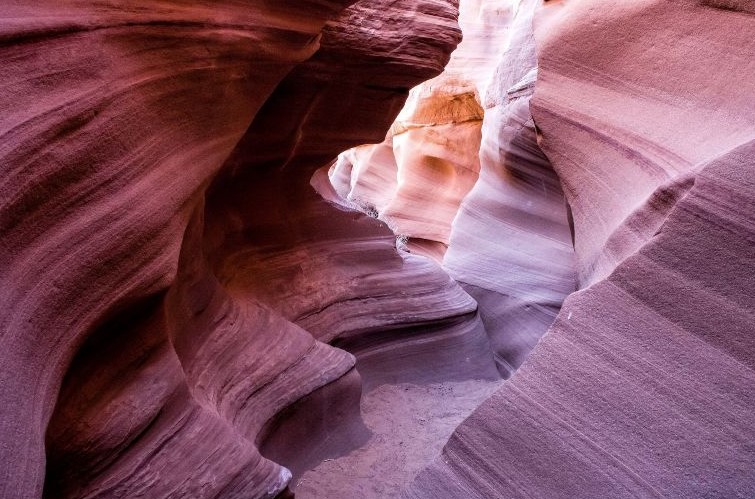
Rattlesnake Canyon
The area around Page, Arizona is home to many slot canyons. The most interesting and sinuous canyon to traverse is Rattlesnake Canyon. A road passes right by Rattlesnake Canyon on the way to Upper Antelope Canyon, which is part of the Upper Antelope Canyon wash system.
Upper Antelope Canyon and Lower Antelope Canyon are both larger tributaries of Antelope Wash. Rattlesnake Canyon is shorter and narrower than either. Those canyons are also not known for the “light beam” phenomenon. This canyon, however, is spectacular because of the color quality of the rocks, the excellent lighting, and its unique formations and passageways.
Due to the famous light shaft’s limited visibility, the Rattlesnake Canyon tour is only available between 10 a.m. and 12 p.m. Be aware that sand is thrown into the air to make the shaft stand out in the darkness. You would not know the light shaft was there if you were in a neighboring passageway.
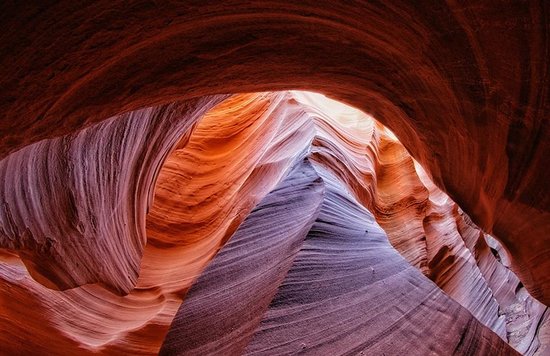
Owl Canyon
Great horned owls can be found in Owl Canyon, which is nearby Rattlesnake Canyon. There is nothing particularly photogenic or narrow about Owl Canyon, but it is fun to see. At the terminal end, the passage is the most interesting. As of my most recent visit, guides and permits were required to visit Rattlesnake and Owl canyons, which is why I hired a private guide (“photographer tour”) with Adventurous Antelope Canyon Tours. In both canyons, I was able to spend a lot of time on my own at my own pace, but it wasn’t cheap.
Related Reading: Unaweep Canyon – A Rare Geological Creek Flow out of Opposite Ends

